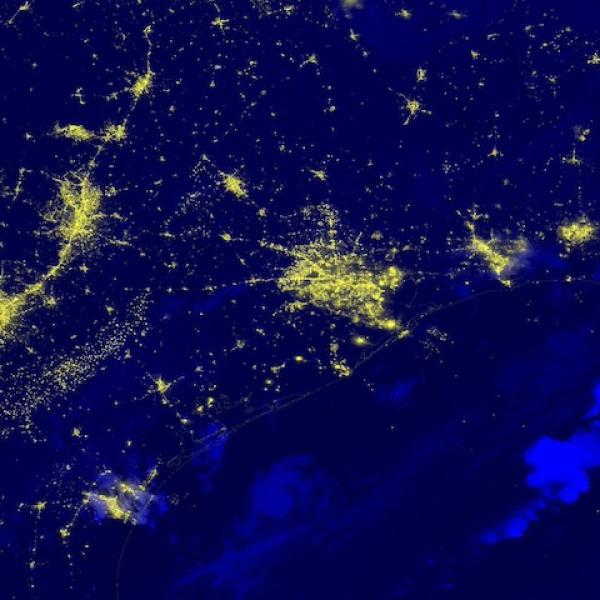Access a range of datasets and data tools to further your nighttime lights research.
Remote sensing of nighttime light emissions offers a unique perspective for investigations into human behaviors, such as tracking the expansion of urban areas or assessing power outages caused by natural disasters such as hurricanes, and biological and ecological studies researching how artificial lights influences nature. Examples include NASA data used for disaster recovery in Puerto Rico following Hurricane Maria in 2017, in studies of how lights influence the activity of nocturnal animals, and analysis of fluctuations in economic activity in Dubai, UAE between 2012 and 2020.
Whereas sunlight is the primary source of light for daytime remote sensing, there are many forms of nighttime illumination. These sources include moonlight, light directly emitted by objects including streetlights, buildings, and ships, and light reflected by the ground known as surface albedo. Snow, especially fresh snow, reflects a high percentage of light hitting it. (Water bodies and forest canopies reflect far less light.)
One of NASA's main sources for nighttime lights imagery is the Visible Infrared Imaging Radiometer Suite (VIIRS) aboard the joint NASA/NOAA Suomi National Polar-orbiting Partnership (Suomi NPP), NOAA-20, and NOAA-21 platforms. All of these platforms acquire global daily measurements of nocturnal visible and near-infrared (NIR) light that can be used for Earth system science and applications studies. For example, VIIRS Day/Night Band (DNB) data are used for estimating population, assessing electrification of remote areas, monitoring disasters and conflict, and understanding biological impacts of increased light pollution.
NASA offers of some of its most popular nighttime data through a suite of products called the Black Marble.
Learn How to Use Nighttime Lights Data



Join Our Community of NASA Data Users
While NASA data are openly available without restriction, an Earthdata Login is required to download data and to use some tools with full functionality.
Learn About the Benefits of Earthdata LoginFrequently Asked Questions
Earthdata Forum
Our online forum provides a space for users to browse thousands of FAQs about research needs, data, and data applications. You can also submit new questions for our experts to answer.
Submit Questions to Earthdata Forumand View Expert Responses